Making flowers from cold porcelain
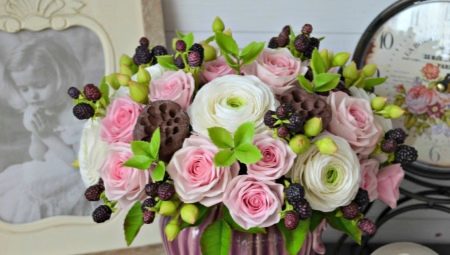
Cold porcelain is one of the most popular materials for modeling a variety of products. The flowers created from it look natural and very sophisticated, remaining persistent and absolutely safe at the stage of creation for the health of even young children.
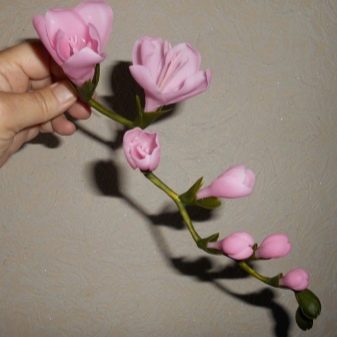
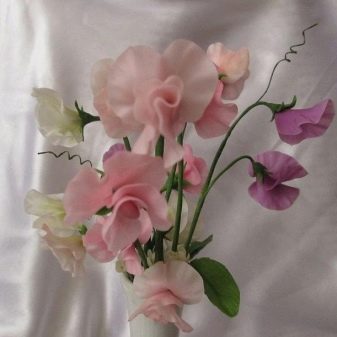
Required tools and materials
Since cold porcelain is sold in stores, already being painted in various shades, to create a flower arrangement, it will be necessary to immediately think over its appearance and select the appropriate set of mass.
As an alternative and desire to get an unusual color, the painting process can be carried out independently at the preparatory stage. Some masters, however, use coloring, having already blinded the entire composition.
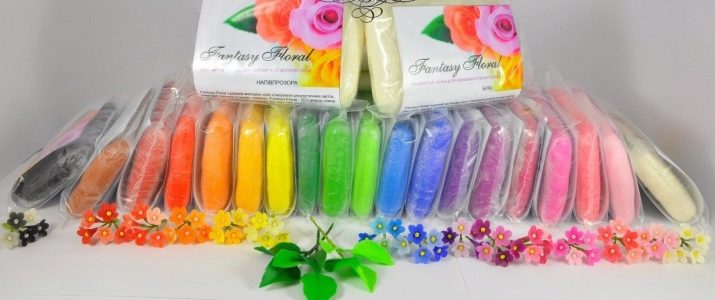
Cold porcelain itself can be purchased or homemade, made from liquid oil and other components. In the second case, the following ingredients are required:
- corn starch;
- baby oil such as Johnson's Baby;
- PVA glue;
- vinegar or lemon juice;
- as well as a greasy hand cream.
Glue and starch are the basis of the recipe, and therefore are acquired in the amount of 240 grams. The other components will need two tablespoons. The process of creating cold porcelain begins with the fact that all the ingredients are thoroughly mixed, after which they are removed in the microwave for half a minute. The container is removed, its contents are stirred until smooth, and then everything is put back into the microwave. This algorithm it is required to repeat several times until the density of the mass begins to cause difficulties with its stirring.
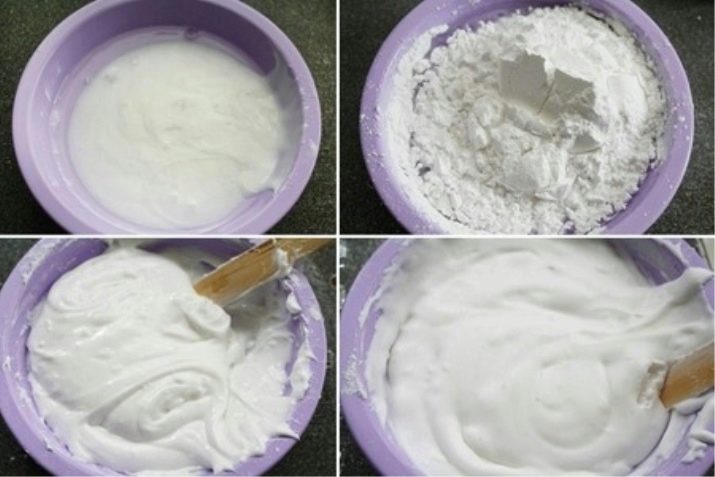
The substance is laid out on a cutting board, previously coated with hand cream. The kneading process lasts until the material acquires elasticity and softness. After that, you can proceed to the direct creation of flowers.
It should be clarified right away that the products will not need additional drying in the oven - it will be enough just to leave them in the fresh air.
To sculpt a flower arrangement, you will also need to prepare a number of tools:
- disposable spoons;
- cookie cutters, for example in the form of a drop;
- cutting board;
- knife;
- rolling pin;
- wire;
- insulating tape.
To complete the work, a basket and decorative grass made of fabric or plastic will come in handy.
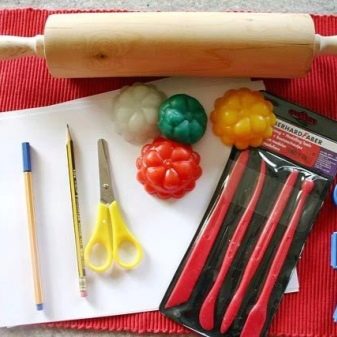
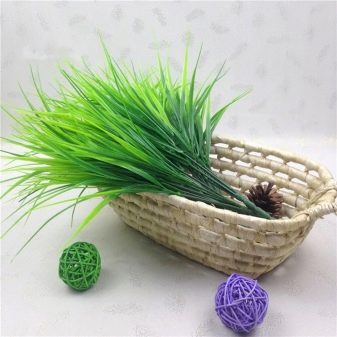
Making roses
Cold porcelain flowers are great for beginners as they are very easy to make with simple instructions. To make roses you will need:
- cold porcelain of red and green shades;
- wire;
- PVA glue;
- paper;
- leaf-shaped molds or even real petals;
- green ribbon;
- wavy knife;
- scissors;
- brush.
Plain paper is impregnated with glue and rolled into balls, after which it is glued to the wire. Red porcelain is kneading in the palms, smeared with greasy cream. Having formed each petal, it must be glued to a paper ball. Typically 11 to 15 petals are required for a lush rose and about 7 petals for a standard rose.

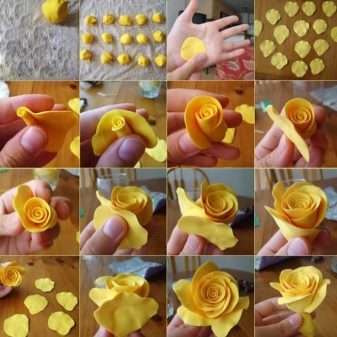
The petals are made using molds. Again, first, cold porcelain is kneaded in hands, if necessary, rolled out with a rolling pin and cut out with molds. To create natural veins, just apply a real petal on top and hold it for a few seconds. The leaves are fixed on the stem by gluing... In order for the composition to completely freeze, it will take a day.
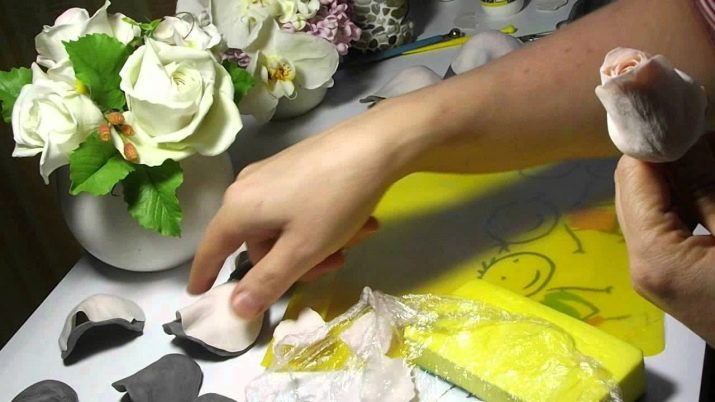
Crocus sculpting
Crocus sculpting begins step by step with the preparation of the necessary materials, including:
- cold porcelain of orange-yellow and purple colors;
- drop-shaped for cookies;
- green electrical tape.
The purple mass is kneaded qualitatively in the hands, after which it is rolled out with a rolling pin, like a dough, to a thin layer. Using a mold, the required number of teardrop-shaped petals is cut out. By the way, if such a form is absent, then a piece of a tin can, folded in the required way, is perfect for this purpose. Using a plastic spoon, each petal is formed into a concave shape.
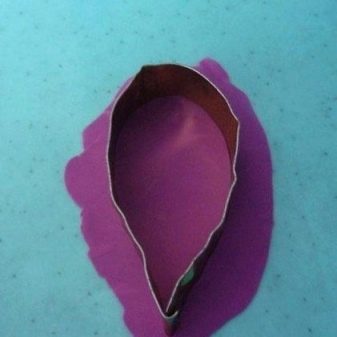

If you create a floral arrangement of 5 flowers, then each will need exactly 12 petals. The wire is cut into equal pieces, the size of which is about 25 centimeters. Wrapping each with electrical tape, you will be able to get beautiful stems. Orange or yellow porcelain will be used to create the center of the flower. It is also rolled out into thin plates and then cut into small triangles. Thanks to the incisions, each of them will be easy to roll into a tube and make pistils.
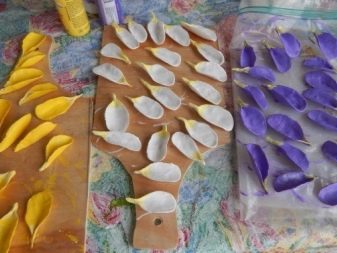
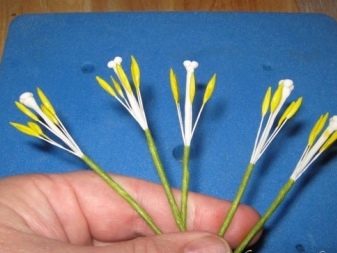
All petals are fixed on the stems in two rows, so that in each of them there are 6 pieces. In the middle is a pestle, pre-coated with glue and rolled in corn grains to obtain a pollen effect. Green porcelain is rolled out and cut into long leaves, each of which is fixed at the bottom of the stem. Usually one pair of leaves is made for each crocus. The resulting flowers are tied with a ribbon and neatly laid out in a basket decorated with artificial grass.
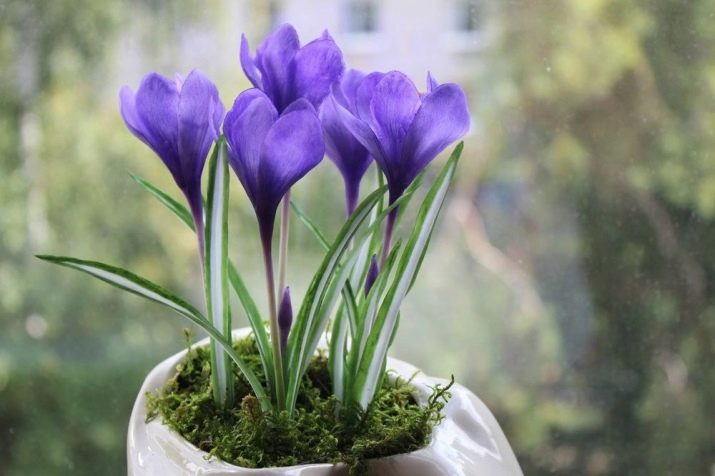
Creation of original poppies
A cold porcelain flower picture is perfect as a gift. You can also make it according to the instructions, which greatly simplifies the whole process. To create a work, you can not do without:
- rolling pins;
- boards;
- scissors;
- foil;
- toothpicks;
- oily cream.
The decoration of the painting itself is impossible without a frame and blue cardboard used as a background. The flowers themselves, in this case poppies, are created either from cold colored porcelain, or from a single-color mass and a set of paints.
First, the porcelain is rolled in a red shade in a column, the diameter of which does not exceed a centimeter. It will become the basis for the petals, which are cut into even slices 2 centimeters long. To transform each piece, you must first roll it into a ball, and then make it triangular on the bottom side. After that, the figure is rolled out with a rolling pin to the thickness required for the petal. Besides, it is worth using a piece of foil to create a natural effect.
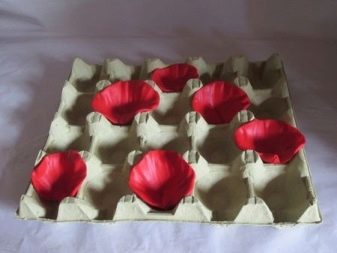
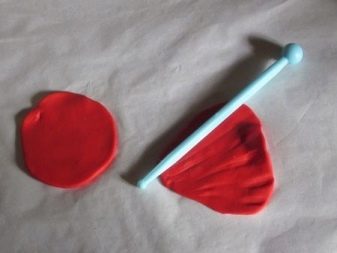
A petal is put into the crumpled foil, and it is still processed with a rolling pin. The middle of the poppy is obtained from cold porcelain, painted green with the addition of a white tint. Future leaves and stems also change color with a mixture of green and a little red. The middle is made in the form of an elongated cylinder. The wire from one end is twisted into a loop and, being coated with glue, is inserted into the box.
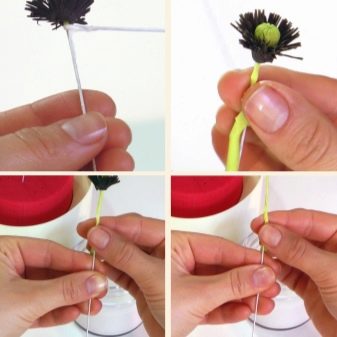
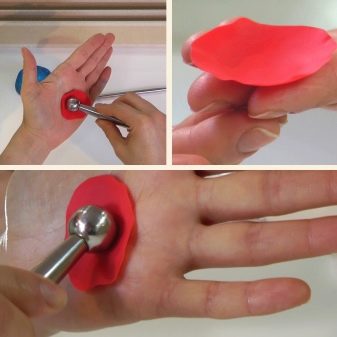
The upper part of the poppy center is lightly processed in a circular motion using wavy scissors. A piece of black porcelain is rolled out into a thin plate and formed into a rectangle. Having created a fringe with a knife, you need to wrap it around the box to simulate stamens. The flower petals are fixed on the box with ordinary glue. It is better to arrange them in a checkerboard pattern, two pieces opposite each other. The stem is created from wire and a thin plate of red-green porcelain.
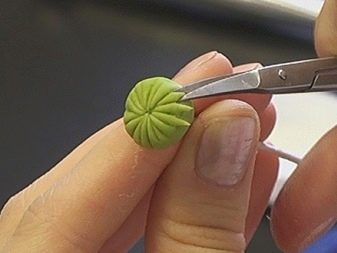
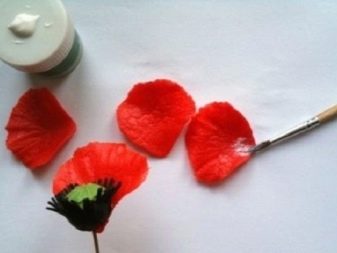
From the material of the same shade, petals are formed, which are additionally pressed with a toothpick to simulate veins. They are glued to the stem in any order. Finally, all the elements are transformed into a painting. They are simply glued to the blue cardboard with a permanent glue, and after drying, they are removed into the frame. If desired, you can add a few natural spikelets of wheat to the porcelain poppies.
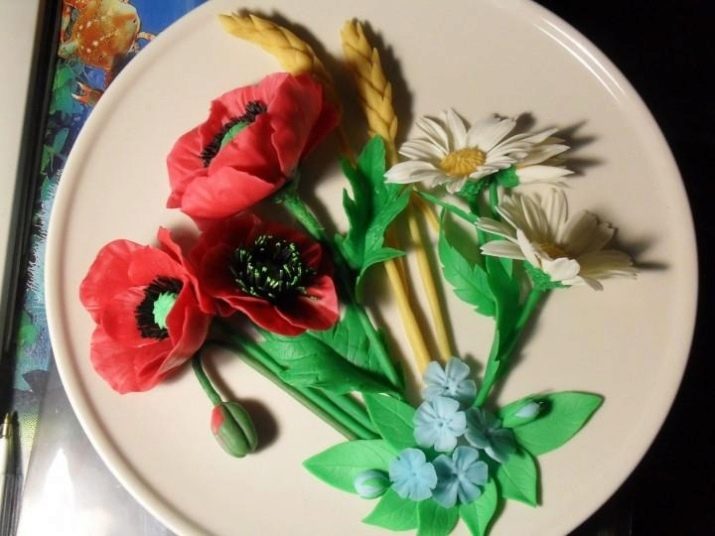
Creative flower arrangements
Of course, it is most interesting when we do not just sculpt individual flowers, but combine them into unusual multi-colored compositions or use them to create accessories or decor items. For example, cold porcelain makes it possible to create a delicate and graceful headband with orchids. The list of required components in this case is quite common. For work you will need:
- cold porcelain;
- multi-colored oil paints;
- acrylic of a red tint;
- red and green pastels;
- wire;
- PVA glue;
- miniature orchid mold;
- knives;
- brushes;
- scissors;
- possibly a dumbbell.
The work must be performed only according to the instructions, since the process of creating jewelry is rather complicated.
Several fragments are cut from the wire, the length of which is 6 centimeters. A loop is formed at one end of the resulting pieces. A small piece of cold porcelain is rolled into a ball, pre-mixed with white paint. The resulting part should have with a diameter of 1 centimeter... A wire loop is dipped in glue and then dipped into a white ball. This algorithm is repeated with other pieces of wire.
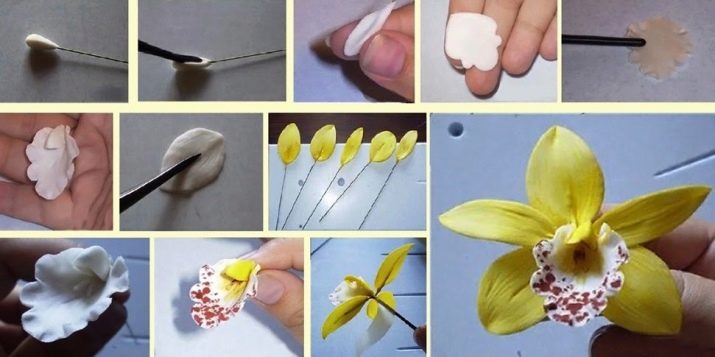
The green pastel is lightly scraped with a regular knife. The resulting powder is collected with a dry brush and used to coat the base of the bud. You should do the same with red pastel and paint the tops of the balls. A fresh piece of cold porcelain is mixed with green oil paint. The material is used to form the stem, so it will have to be carefully stretched over almost the entire wire, with the exception of the bottom centimeter. Again, the algorithm is repeated with all the blanks.
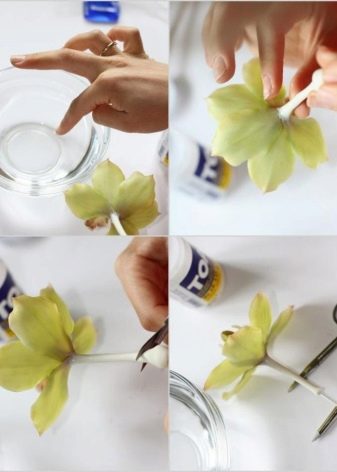
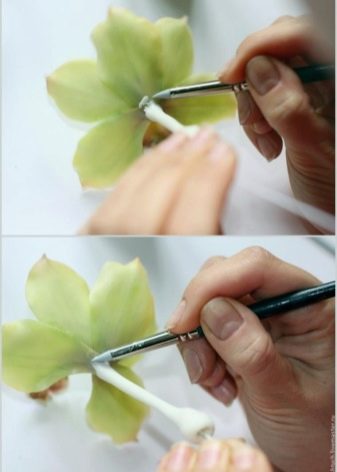
A large ball with a diameter of 2.5 centimeters is mixed with white and red oil paints to obtain a pale pink color. The material is used to form flower petals, each of which must be 1.5 centimeters high. Mold in this situation will help mimic the texture of a real orchid. Pressing down the workpiece with a dumbbell, it will be possible to give it the necessary concavity. For one orchid flower you need 5 petals, moreover, three copies are connected first, and then two more are glued to them.
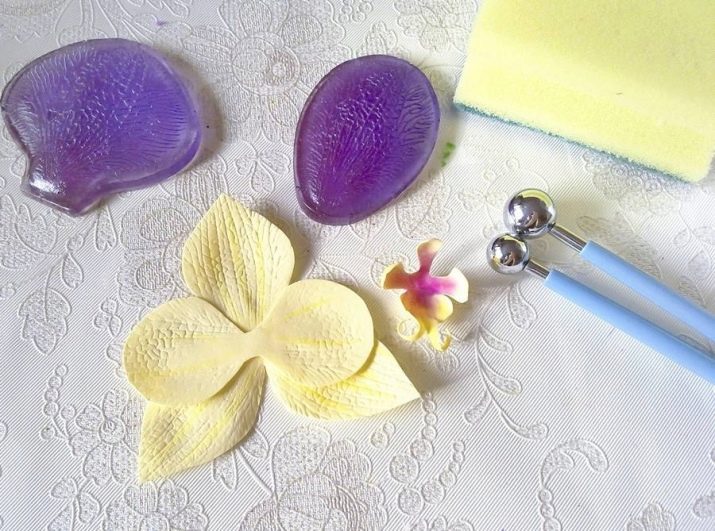
Cold porcelain, combined with a deep red oil dye, forms the core of an orchid. It is also punched out with a dumbbell and corrected mechanically. The cores are located between the petals, after which the two varieties of the resulting flowers are fixed on the rim itself. At the same time, the wire stems are wrapped around the structure itself. Red acrylic will allow you to paint the sharp ends of the centers of the flowers and apply dots to the petals themselves. The bezel will dry for 24 hours.
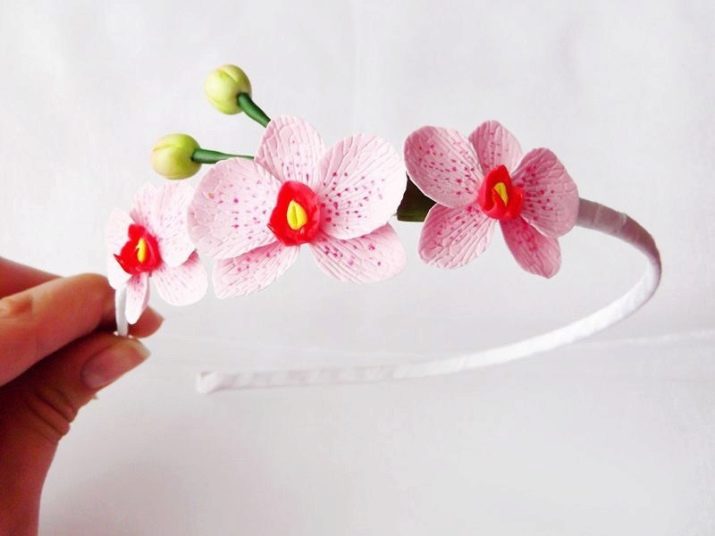
Next, watch the video with a master class on making flowers from cold porcelain.






